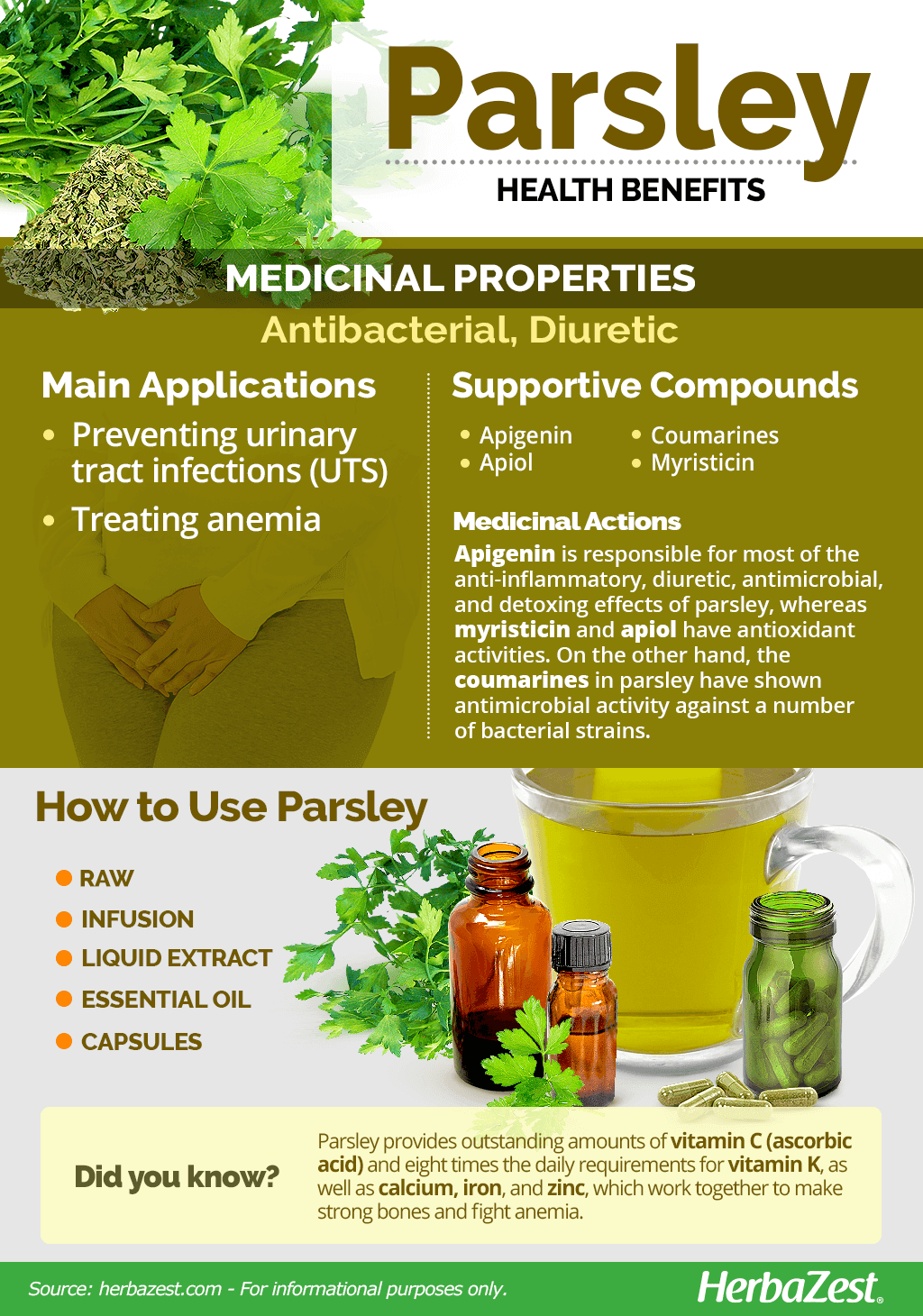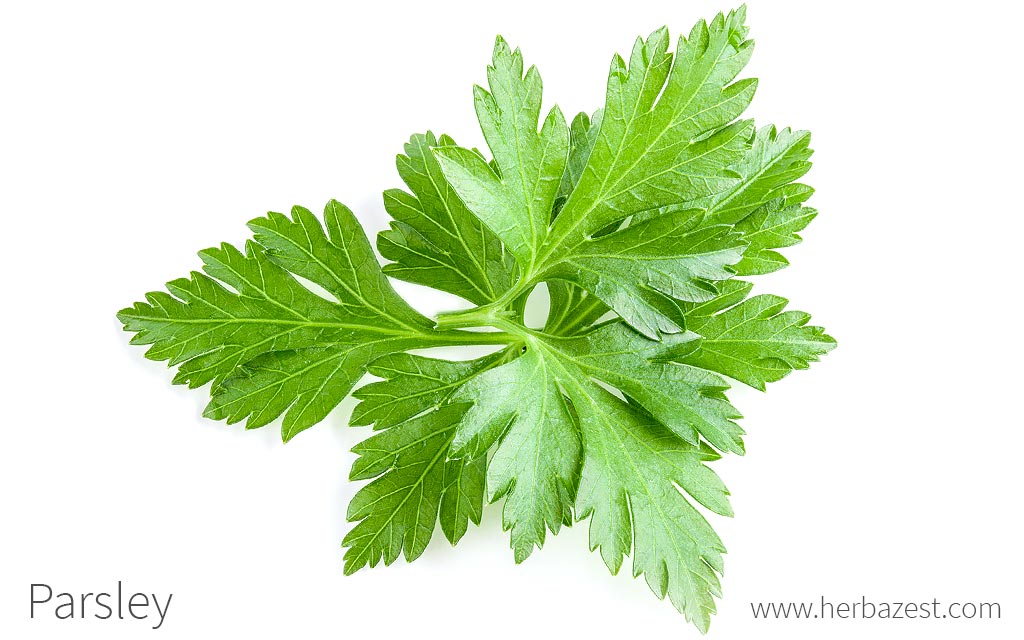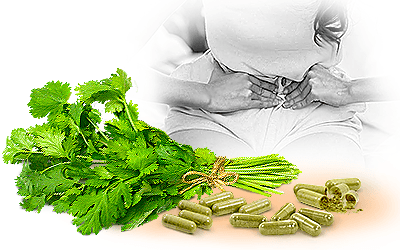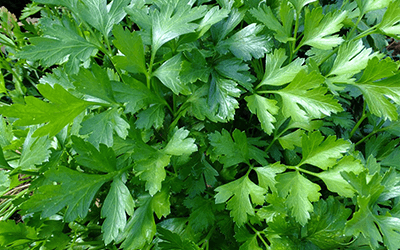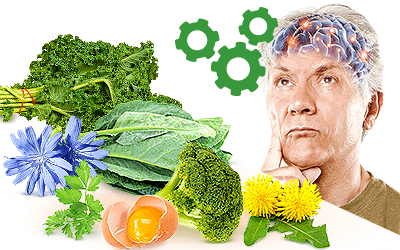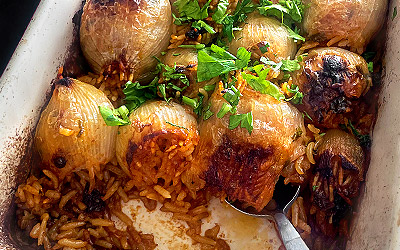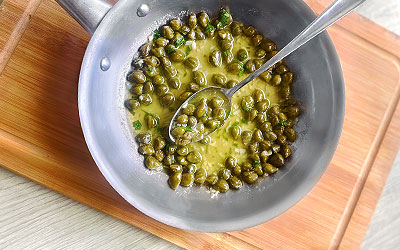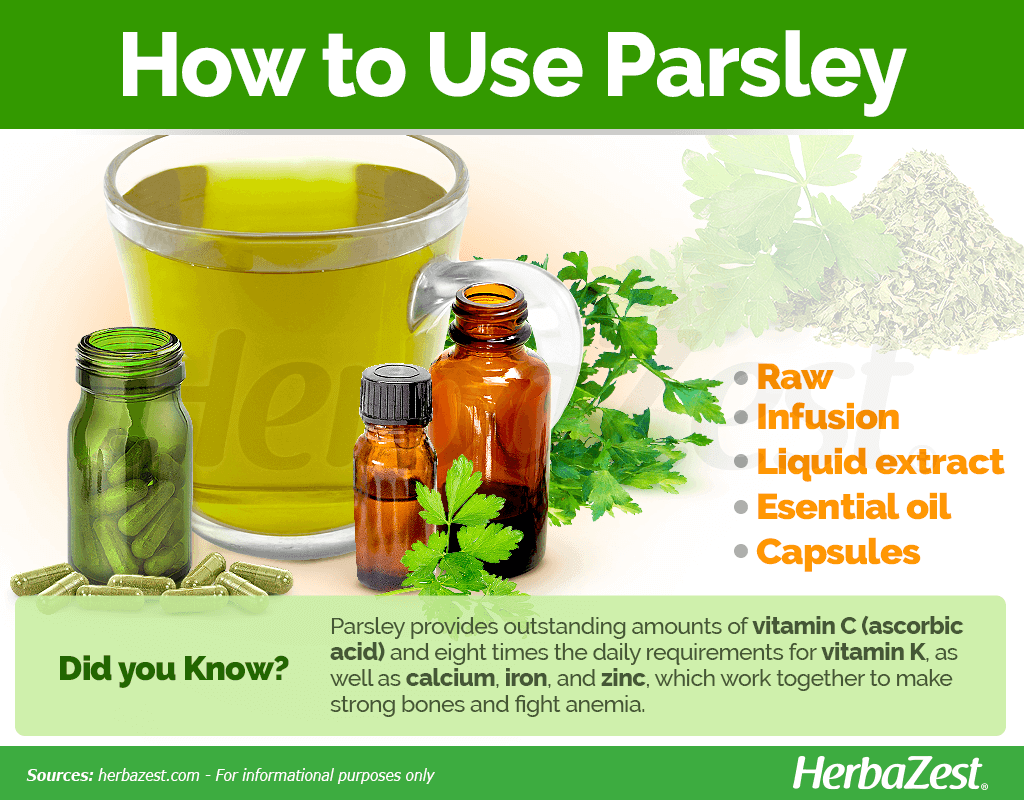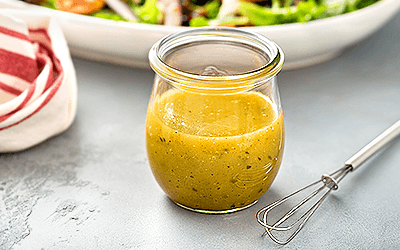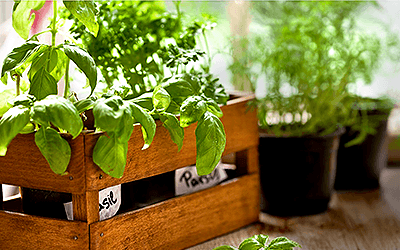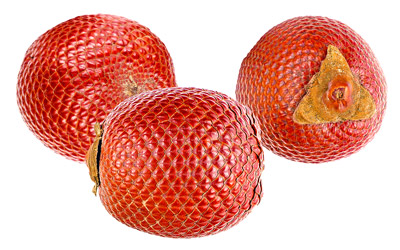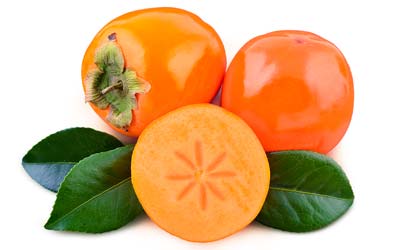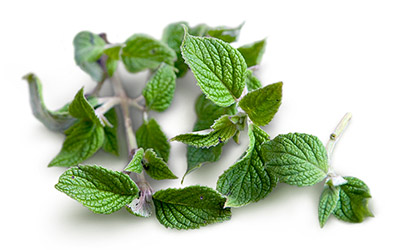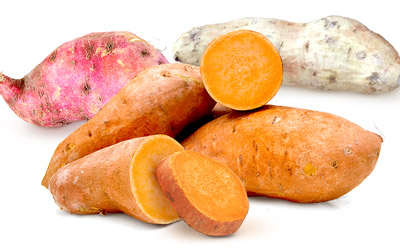After salt and pepper, parsley is perhaps the most common seasoning in Western cookery, a mainstay of salads and finishing garnishes in a wide array of cuisines. Despite its ubiquity, however, this biennial herb is sometimes considered an afterthought when it really deserves more recognition for its great nutritional value and time-tested medicinal use.
Parsley Medicinal Properties
- Medicinal action Antibacterial, Diuretic
- Key constituents Apigenin, myristicin, apiol, coumarins
- Ways to use Capsules, Hot infusions/tisanes, Liquid extracts, Food, Freshly ground, Essential oil
- Medicinal rating (3) Reasonably useful plant
- Safety ranking Safe
Health Benefits of Parsley
Used for over 2,000 years, parsley has a number of medicinal purposes. Since it is anti-inflammatory and diuretic it has been used to treat many different ailments throughout the body. Traditionally, parsley properties have been used for:
Preventing urinary tract infections. Parsley properties include diuretic and antibacterial actions, which have been traditionally used to prevent and treat bladder and kidney problems.
Treating anemia. Parsley nutritional benefits are commonly reaped in culinary ways, for treating the weakness and fatigue related to iron deficiency,
Additionally, the medicinal properties of parsley are highly effective for treating respiratory conditions, such as asthma, running nose, and congestion. It is also said to help in treating inflammatory diseases, such as gout, rheumatism, and arthritis.
Furthermore, research supports parsley benefits for alleviating PMS cramps by inducing menstruation, as well as for aiding bone formation and reducing blood pressure.
Parsley properties make it an efficient diuretic and digestive herb, particularly beneficial to kidneys' health.
How It Works
Active compounds identified in Parsley and phenols and flavonoids, particularly apigenin; as well as essential oils - mainly myristicin and apiol - and coumarins.
Apigenin, a flavonoid found in the leaves, is responsible for the anti-inflammatory, antiviral, and purgative effects of the herb, while myristicin and apiol are the major constituents of parsley seed oil, and both exhibit antioxidant activities.
The coumarines contained in parsley have shown antimicrobial activity against a number of bacterial strains, such as Bacillus subtilis, P. aeruginosa, S. epidermidis, S. aureus, and Saccharomyces cerevisiae.
Other herbs with antibacterial properties are stonebreaker and calendula, while asparagus and lime also help fight iron deficiency anemia. Additionally, horse chestnut and sweet birch are also effective for flushing toxins from the urinary tract.
Parsley Side Effects
For medicinal purposes parsley should be taken under medical supervision. While it is commonly used to treat iron deficiency and urinary tract infections (UTIs), the over consumption of parsley can cause anemia, as well as liver and kidney problems. Parsley seed oil, when applied topically, can also cause skin irritation and worsen sun burn.
Cautions
Pregnant women are warned against excessive consumption of parsley, since that can result in miscarriages and trigger menstrual flow.
Because it can thin blood, parsley should not be consumed when taking anticoagulant drugs or prior to surgical procedures.
Parsley Nutrition
Mostly used as a culinary herb, parsley nutritional benefits can be obtained even from consuming it in small amounts.
Parsley offers outstanding amounts of vitamin C (ascorbic acid), the most popular antioxidant, even surpassing those of orange, strawberry and lime. This humble culinary herb also provides almost eight times the daily requirements for vitamin K (phylloquinone), which improves coagulation and promotes healthy bones.
Other important nutrients found in parsley are vitamin B9 (folate), which plays a key role in fetal development, red blood cells' production, and iron absorption, as well as vitamin A (from betacarotene), necessary for health eyes and skin, along with adequate quantities of B-complex vitamins.
Parsley is also an excellent source of iron, required for the creation of new red blood cells; and potassium, which is essential for the balance of body fluids. It also provides good amounts of calcium and zinc, which works with iron to make strong bones and fight anemia.
A cup of fresh parsley (60 grams) provides 52 calories, as well as 4% and 8% of the daily value for protein and dietary fiber, respectively.

How to Consume Parsley
- Edible parts Leaves
- Edible uses Flavoring, Condiment
- Taste Aromatic, Earthy
Parsley can be consumed in a variety of ways in order to benefit from its nutritional value. Whether it's used as a culinary spice or taken in its supplemental form, parsley should be consumed based on individual needs and purposes.
Natural Forms
Raw. A main staple in many dishes globally, adding fresh parsley leaves to food can aid in digestion due to its chlorophyll content. It is also high in vitamins A, C, and K.
Infusion. Parsley leaves can brewed, alone or mixed with other herbs, and consumed as an herbal tea with diuretic properties, which can also aid in removing toxins, such as heavy metals, from the body. A parsley infusion of is said to be useful for treating gallstones.
Herbal Remedies & Supplements
Essential oil. Because of its anti-inflammatory properties, parsley essential oil can be used for a number of purposes, including relieving joint and arthritis pain.
Liquid extract. The chlorophyll content found in parsley makes this preparation great for aiding digestion.
Capsules. This supplemental form provides standardized doses that can be taken daily to promote digestion, reduce general inflammation and treating iron-deficiency anemia.
Growing
- Life cycle Biennial
- Harvested parts Leaves
- Light requirements Full sun
- Soil Loamy sand
- Soil pH 6.1 – 6.5 (Slightly acidic), 6.6 – 7.3 (Neutral)
- Growing habitat Temperate climates
- USDA Plant Hardiness Zones 3a, 3b, 4a, 4b, 5a, 5b, 6a, 6b, 7a, 7b, 8a, 8b, 9a, 9b
- Potential insect pests Cabbage loopers
- Potential diseases Root rot
Native to the Mediterranean region, parsley is a biennial plant which thrives under temperate conditions, ideally between 50 - 70°F (10 - 21°C). However, it is a hearty plant that can survive if there is a deviation in temperature.
Growing Guidelines
Ideal temperatures for growing parsley are between 50 - 70°F (10 - 21°C), though it will survive the light frost of early spring.
Parsley prefers fertile, well-drained soil with a pH of 6.0 - 7.0.
Fertilizers or organic matter should be constantly applied.
The area around parsley plants should be weeded often in order to avoid competition.
Parsley propagates directly from seeds. Germination will occur between two and six weeks.
Frequent watering and full sunlight exposure are required.
Snipping stalks near the soil will allow for continued growth after each harvest.
Detailed information about growing parsley can be found in the herb garden section.
Additional Information
Plant Biology
The stems of parsley can measure up to one foot (30 cm) long and feature radiating rosette leaves, umbels of small white flowers during periods of pollination, and ribbed seeds. Curly and flat foliage are equally common.
Classification
Parsley (Petroselinum crispum) is officially a member of Apiaceae, also known as the parsley family, along with 3,700 other species, including many well known aromatic and culinary herbs, such as anise (Pimpinella anisum), carrot (Daucus carota), celery (Apium graveolens), dill (Anethum graveolens), and fennel (Foeniculum vulgare).
The botanical name of parsley comes for the Greek word petroselinon, where petra means 'rock', and selinon means 'celery', in reference to the rocky, natural habitat of the herb.
Related species and Varieties of Parsley
Although it belongs to a different genus, the closest relative of parsley is parsnip (Pastinaca sativa), which is also similar to carrot.
There are several types of parsley, many of them commercially cultivated. Some of the most popular parsley's cultivars are:
Italian or flat-leaf parsley (Petroselinum crispum var. neapolitanum) is most commonly used as seasoning for its stronger flavor and easy home growth, resembling originally wild strains.
Curly leaf parsley (Petroselinum crispum var. crispum) is preferred as a garnish or decorative interest.
Hamburg parsley (Petroselinum crispum var. tuberosum), found primarily in central Europe, has significantly thicker roots and is often eaten as a vegetable in soups and stews.
Historical Information
Parsley is native to the Mediterranean regions of southern Europe and northern Africa, first cultivated approximately 2,000 years ago in ancient Greece and Rome, where it was associated to mythological traditions and used as a digestive aid.
The Middle Ages saw its migration to other European countries as it reached Britain in 1548, where it grew in popularity as a mask for unpleasant oral odors. It has since been welcomed and naturalized worldwide.
Economic Data
Due to high demand within the food industry, parsley is a major export crop for many countries in its native zones. Italy, Spain, and Greece boast significant revenue from the crop, though the Netherlands - which generates 22% of all spices grown in Europe - has led the way in recent years. India also produces a large quantity of the herb, gaining more from fresh varieties than selling it pre-dried.
Popular Beliefs
The plant was considered a sacred religious symbol long before its first employment as a seasoning. Ancient Greeks first used parsley to adorn the tombs of loved ones and the brows of athletic champions, linking it to the transience of life. In ancient Rome, parsley was associated with the goddess Persephone, queen of the underworld, and was used in funeral ceremonies.
Other Uses of Parsley
Gardening. Parsley is a favorite of amateur herb gardeners for its practical benefits and ability to attract wildlife. Butterflies, bees, and other nectar-feeding insects are drawn to the pollen of its flowers, and some birds are known to feed upon its seeds.
Sources
- Brazilian Journal of Microbiology, Evaluation of the antibacterial potential of Petroselinum crispum and Rosmarinus officinalis against bacteria that cause urinary tract infections, 2013
- Connecting Indian Wisdom and Western Science, p. 218
- Handbook of Herbs and Spices, pp. 444 - 447
- Journal of Traditional Chinese Medicine, Parsley: a review of ethnopharmacology, phytochemistry and biological activities, 2013
- Rosemary Gladstar's Medicinal Herbs - A Beginner's Guide, p. 99
- The Secret Benefits of Spices and Condiments, pp. 89-91
- University of Minnesota College of Food, Agriculture, and Natural Resources Sciences, Growing Parsley
- World Spice Plants: Economic Usage, Botany, Taxonomy, p. 282
- Encyclopedia of Herbal Medicine, p. 247
- Encyclopedia of Natural Medicine, p. 287
- Medicinal Plants of the World, p. 235
- The Herb Book, pp. 294-5
- Encyclopedia Britannica Online, Parsley
- Germplasm Resources Information, Taxon: Petroselinum crispum (Mill.) Fuss
